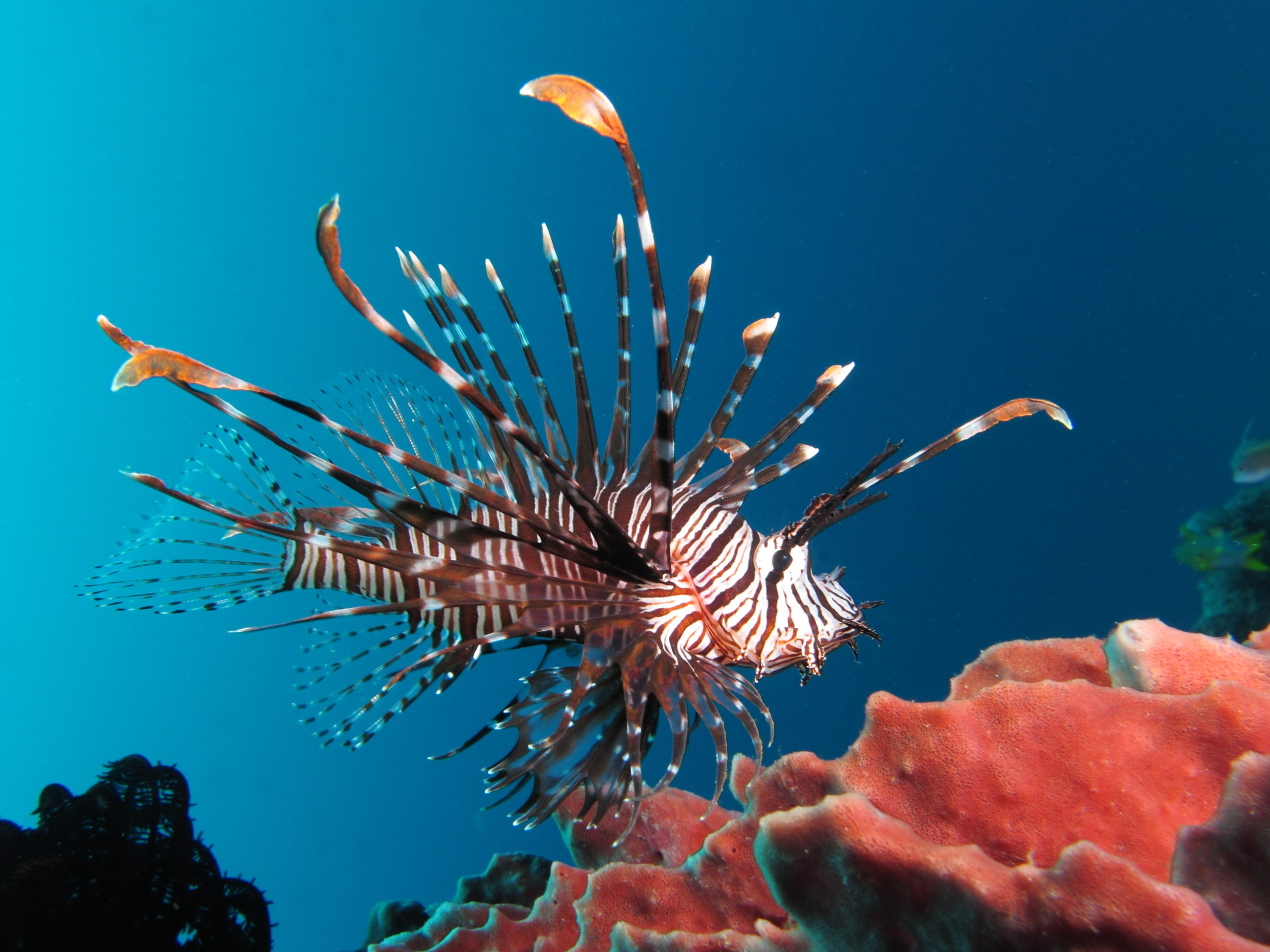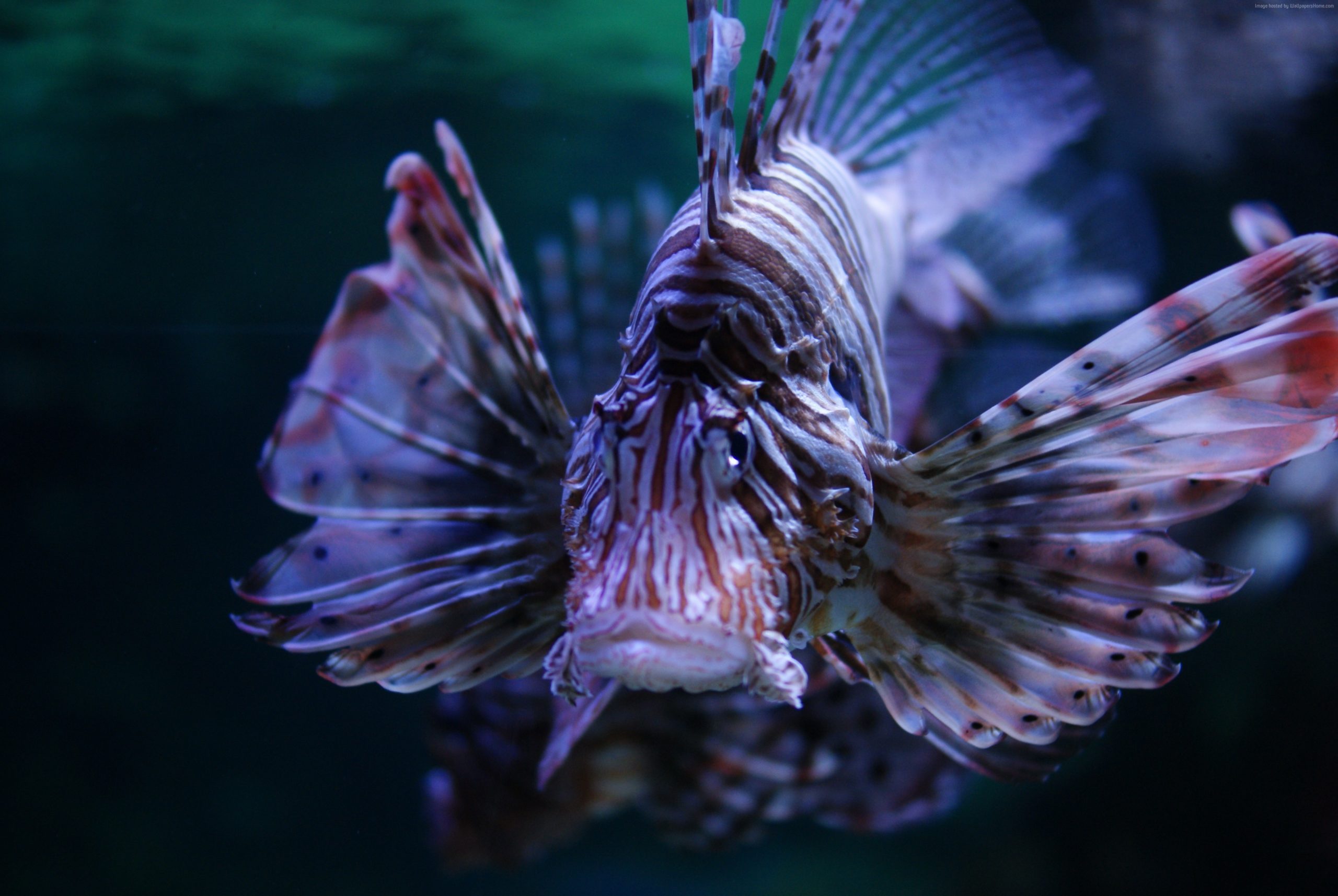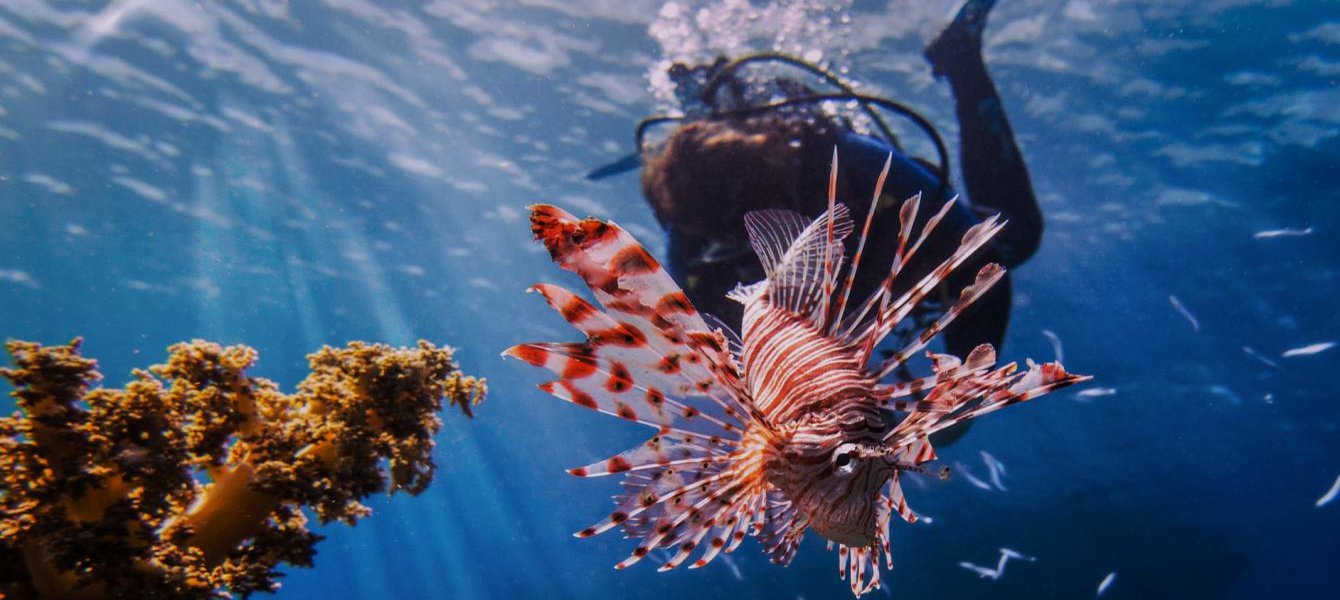© 2000-2025 - Enkey Magazine - All rights reserved
ENKEY SNC - VAT ID IT03202450924 / REA Code CA253701 - Phone. 078162719
Invasive lionfish specimen may soon overwhelm the Brazilian marine ecosystem. This might sound like the pitch for a new horror flick in the vein of Sharknado, but make no mistake – the threat is all too real, scientists claim.
Never before had specimens of Pterois Volitans washed up in Brazil. And yet, it only took four years to bring lionfish into a hitherto untouched new habitat; already four lionfish have been found in Brazilian islands, much to the concern of marine researchers. Lionfish are an highly invasive species; its colonization of the Mediterranean Sea took “only” thirty years.
The consequences may be devastating on the marine ecosystem. Several fish species that lionfish feed on mightface extinction over the course of a few decades, causing yet more damage to the already ailing Great Barrier Reef.
But how did lionfish get so far from their natural habitats? And just how big a threat does their presence pose to the Caribbean fauna?
Meet the lionfish, extravagant (and poisonous) sea hunter
Lionfish (Pterois Volitans) are native of the Pacific Ocean, Asia and Polinesia, but can be found also in Japanese and Australian waters.
This species is often mistaken with the scorpionfish, but although both belong to the Scorpaenide family, there are some deep differences. Scorpionfish are close relatives of rockfish, bottom-feeders that disguise themselves under the sand and among sea fronds to hunt down small fish. In order to camouflage with their hunting grounds, scorpionfish sport ridges, spines, skin flaps, frills, and a mimetic, speckled coloring.

Conversely, lionfish are far more noticeable. Long rays of poisonous spines protrude from their dorsal, pectoral and anal fins, resembling a “mane” – hence the name. Their coloring is also flashier with bronzed, reddish and white stripes.
Lionfish are not strictly bottom-dwellers, either. This species preferably hunts in close proximity to corals and gorgonies, but during the day hours they can sometimes be found resting under the sand.
Like other members of the Scorpaenida family, lionfish are venomous. Symptoms include swellness, skin rash and numbness, with migraine, nausea, paralysis and seizures in the worst cases. However, if treated timely, the poison is almost never deadly.
Night diving and snorkeling are some of the most common causes of stings. It’s been observed that lionfish are drawn to dive lights – both alone and in groups – and might consequently attack divers, perceiving the all-too-bright source of light as a threat.
From aquariums to Brazil
The California Academy of Sciences published a new study on invasive lionfish penetration in Brazilian and Mediterranean waters. How did this species get so far away from its native habitat anyway?
Part of the reason may be due to pollution and overheating. Particularly, Mediterranean waters are now the perfect habitat for various small fish and crustaceans that lionfish prey upon. Specimen have been found in Italy and Greece, particularly near Corfu.
However, lionfish have become most invasive in the United States and the Caribbeans, respectively. In a little under thirty years, the species quickly became the apex predator in these waters, often causing extreme damages to the sea ecosystem with their extreme voracity. Scientists have expressed concern that several species native of the Great Barrier Reef might go exinct in the next decades.

Fishkeeping may be another reason why the species has spread so far and wide. Lionfish, though venomous, are highly sought after for their decorative appearance and unique coloring. But once they are released in the wild and out into the open ocean, they reproduce at extraordinary speed, spawning even as often as once every four days. Lionfish are fertile all year long and may reproduce at any period of the year. Females lay eggs in open water where they float adrift on the currents, spreading farther and farther.
The alarming report of California Academy of Sciences
After becoming invasive in both american and caribbean waters, several lionfish sighthings in Brazil have been reported to the California Academy of Sciences – to the researchers chagrin, Brasilian waters host a wide variety of unique native species that are found nowhere else in the world, and which may fall easy prey to this formidable predator – with dire consequences on the habitat at large.
We’ve said before that lionfish are the apex predator in their habitat. What this means is that Pterois volitans are at the top of the food chain and have no natural predators. Except man. Scientists have encouraged fishing for culinary purposes as a mean of contrasting the invasive growth of this species. No less than their scorpionfish cousins, lionfish are safe to eat and their lean, clear meat is considered a great delicacy.

A less invasive solution might be looking into ways to sterilize – or, at most, reduce the fertility – of invasive Pterois Volitans. The introduction of forms of birth control may limit the diffusion of this species into alien ecosystems.
Preys would thus get the chance to adapt to the presence of a new predator in their habitat, developing new fight or flight techniques. Yet time is the key factor. Preventing the mass-extinction of native species is an absolute priority. And if push comes to shove, spearfishing communities may very well be Brazil’s last hope.
This post is also available in:
 Italiano
Italiano












